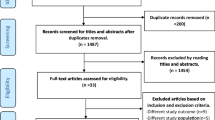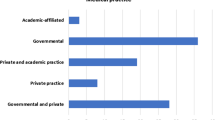Abstract
Chitosan dressing might be promising to promote the recovery following endoscopic sinus surgery (ESS). However, the results remain controversial. We conducted a systematic review and meta-analysis to explore the influence of chitosan dressing on ESS. PubMed, EMbase, Web of science, EBSCO, and Cochrane library databases were systematically searched. Randomized controlled trials (RCTs) assessing the effect of chitosan dressing on endoscopic sinus surgery were included. Two investigators independently searched articles, extracted data, and assessed the quality of included studies. The primary outcomes were synechia and hemostasis. Meta-analysis was performed using random-effect model. Four RCTs involving 268 patients were included in the meta-analysis. Overall following ESS, compared with control intervention, chitosan dressing significantly reduced synechia (RR = 0.25; 95% CI 0.13–0.49; P < 0.0001) and promoted hemostasis (RR = 1.70; 95% CI 1.37–2.11; P < 0.00001), but showed no impact on granulations (RR = 1.18; 95% CI 0.72–1.95; P = 0.52), mucosal edema (RR = 0.88; 95% CI 0.60–1.29; P = 0.51), crusting (RR = 0.85; 95% CI 0.48–1.53; P = 0.60), and infection (RR = 0.88; 95% CI 0.51–1.52; P = 0.64). Compared to control intervention, chitosan dressing could significantly decrease edema and improve hemostasis, but had no effect on granulations, mucosal edema, crusting and infection.







Similar content being viewed by others
References
Lazar RH, Younis RT, Long TE (1993) Functional endonasal sinus surgery in adults and children. Laryngoscope 103:1–5
DeConde AS, Mace JC, Levy JM, Rudmik L, Alt JA, Smith TL (2017) Prevalence of polyp recurrence after endoscopic sinus surgery for chronic rhinosinusitis with nasal polyposis. Laryngoscope 127:550–555
Steele TO, Detwiller KY, Mace JC, Strong EB, Smith TL, Alt JA (2016) Productivity outcomes following endoscopic sinus surgery for recurrent acute rhinosinusitis. Laryngoscope 126:1046–1053
Antisdel JL, Meyer A, Comer B, Jang D, Gurrola J, Khabbaz E et al (2016) Product comparison model in otolaryngology: equivalency analysis of absorbable hemostatic agents after endoscopic sinus surgery. Laryngoscope 126(Suppl 2):S5–S13
Eloy P, Andrews P, Poirrier AL (2017) Postoperative care in endoscopic sinus surgery: a critical review. Curr Opin Otolaryngol Head Neck Surg 25:35–42
Brook CD, Maxfield AZ, Ahmed H, Sedaghat AR, Holbrook EH, Gray ST (2017) Factors influencing the need for endoscopic sinus surgery in adult patients with cystic fibrosis. Am J Rhinol Allergy 31:44–47
Chung YJ, An SY, Yeon JY, Shim WS, Mo JH (2016) Effect of a chitosan gel on hemostasis and prevention of adhesion after endoscopic sinus surgery. Clin Exp Otorhinolaryngol 9:143–149
May M, Levine HL, Mester SJ, Schaitkin B (1994) Complications of endoscopic sinus surgery: analysis of 2108 patients—incidence and prevention. Laryngoscope 104:1080–1083
White A, Murray JA (1988) Intranasal adhesion formation following surgery for chronic nasal obstruction. Clin Otolaryngol Allied Sci 13:139–143
Bugten V, Nordgard S, Skogvoll E, Steinsvag S (2006) Effects of nonabsorbable packing in middle meatus after sinus surgery. Laryngoscope 116:83–88
Piski Z, Gerlinger I, Nepp N, Revesz P, Burian A, Farkas K et al (2017) Clinical benefits of polyurethane nasal packing in endoscopic sinus surgery. Eur Arch Otorhinolaryngol 274:1449–1454
Kang B, Kim JR, Shin JM, Park IH, Lee HM (2016) Efficacy and safety of Guardcel nasal packing after endoscopic sinus surgery: a prospective, single-blind, randomized controlled study. Clin Exp Otorhinolaryngol. doi:10.21053/ceo.2016.01081
Xu J, Park SJ, Park HS, Han R, Rha KS, Kim YM (2016) Effects of triamcinolone-impregnated nasal dressing on subjective and objective outcomes following endoscopic sinus surgery. Eur Arch Otorhinolaryngol 273:4351–4357
Lee EJ, Hwang HJ, Jung CM, Kim MK, Kim KS (2017) Anti-adhesive effect of solid mixture of sodium hyaluronate/carboxymethylcellulose in murine nasal cavities. Eur Arch Otorhinolaryngol 274:181–188
Huang TW, Wei CK, Su HW, Fang KM (2016) Chitosan promotes aquaporin formation and inhibits mucociliary differentiation of nasal epithelial cells through increased TGF-beta1 production. J Tissue Eng Regen Med. doi:10.1002/term.2274
Contri RV, Fiel LA, Alnasif N, Pohlmann AR, Guterres SS, Schafer-Korting M (2016) Skin penetration and dermal tolerability of acrylic nanocapsules: influence of the surface charge and a chitosan gel used as vehicle. Int J Pharm 507:12–20
Azab AK, Doviner V, Orkin B, Kleinstern J, Srebnik M, Nissan A et al (2007) Biocompatibility evaluation of crosslinked chitosan hydrogels after subcutaneous and intraperitoneal implantation in the rat. J Biomed Mater Res Part A 83:414–422
Luppi B, Bigucci F, Cerchiara T, Zecchi V (2010) Chitosan-based hydrogels for nasal drug delivery: from inserts to nanoparticles. Expert Opin Drug Deliv 7:811–828
Valentine R, Athanasiadis T, Moratti S, Hanton L, Robinson S, Wormald PJ (2010) The efficacy of a novel chitosan gel on hemostasis and wound healing after endoscopic sinus surgery. Am J Rhinol Allergy 24:70–75
Hsu K, Ericksen M, Catalano P (2015) Effect of a chitosan-based biodegradable middle meatal dressing after endoscopic sinus surgery: a prospective randomized comparative study. Sinusitis 1:3
Ngoc Ha T, Valentine R, Moratti S, Robinson S, Hanton L, Wormald PJ (2013) A blinded randomized controlled trial evaluating the efficacy of chitosan gel on ostial stenosis following endoscopic sinus surgery. Int Forum Allergy Rhinol 3:573–580
Moher D, Liberati A, Tetzlaff J, Altman DG, Group P (2009) Preferred reporting items for systematic reviews and meta-analyses: the PRISMA statement. BMJ 339:b2535
Higgins JPT GS (2011) Cochrane Handbook for Systematic Reviews of Interventions Version 5.1.0. The Cochrane Collaboration. http://www.cochrane-handbook.org. Accessed March 2011
Jadad AR, Moore RA, Carroll D, Jenkinson C, Reynolds DJM, Gavaghan DJ et al (1996) Assessing the quality of reports of randomized clinical trials: is blinding necessary? Control Clin Trials 17:1–12
Kjaergard LL, Villumsen J, Gluud C (2001) Reported methodologic quality and discrepancies between large and small randomized trials in meta-analyses. Ann Intern Med 135:982–989
Garnica-Palafox IM, Sanchez-Arevalo FM (2016) Influence of natural and synthetic crosslinking reagents on the structural and mechanical properties of chitosan-based hybrid hydrogels. Carbohydr Polym 151:1073–1081
Balagangadharan K, Dhivya S, Selvamurugan N (2016) Chitosan based nanofibers in bone tissue engineering. Int J Biol Macromol. doi:10.1016/j.ijbiomac.2016.12.046
Kurita K (2006) Chitin and chitosan: functional biopolymers from marine crustaceans. Mar Biotechnol 8:203
Rajiv S, Harding M, Bassiouni A, Jardeleza C, Drilling A, James C et al (2013) The efficacy and safety of chitosan dextran gel in a burr hole neurosurgical sheep model. Acta Neurochirurgica 155:1361–1366 (discussion 6)
Maccabee MS, Trune DR, Hwang PH (2003) Effects of topically applied biomaterials on paranasal sinus mucosal healing. Am J Rhinol 17:203–207
Chandra RK, Conley DB, Haines GK 3rd, Kern RC (2005) Long-term effects of FloSeal packing after endoscopic sinus surgery. Am J Rhinol 19:240–243
Athanasiadis T, Beule AG, Robinson BH, Robinson SR, Shi Z, Wormald PJ (2008) Effects of a novel chitosan gel on mucosal wound healing following endoscopic sinus surgery in a sheep model of chronic rhinosinusitis. Laryngoscope 118:1088–1094
Zhou J, Elson C, Lee TDG (2004) Reduction in postoperative adhesion formation and re-formation after an abdominal operation with the use of N,O-carboxymethyl chitosan. Surgery 135:307–312
Davey AK, Maher PJ (2007) Surgical adhesions: a timely update, a great challenge for the future. J Minim Invasive Gynecol 14:15–22
Klokkevold PR, Fukayama H, Sung EC, Bertolami CN (1999) The effect of chitosan (poly-N-acetyl glucosamine) on lingual hemostasis in heparinized rabbits. J Oral Maxillofac Surg 57:49–52
Valentine R, Athanasiadis T, Moratti S, Robinson S, Wormald PJ (2009) The efficacy of a novel chitosan gel on hemostasis after endoscopic sinus surgery in a sheep model of chronic rhinosinusitis. Am J Rhinol Allergy 23:71–75
Acknowledgements
This study was supported by Shenzhen Municipal Science and Technology Innovation Committee (No.: CXZZ20140509151403304); Health and Family Planning Commission of Shenzhen Municipality (No.: 201401006).
Author information
Authors and Affiliations
Corresponding author
Ethics declarations
Conflict of interest
The authors declare no conflict of interest.
Ethical approval
This article does not contain any studies with human participants or animals performed by any of the authors.
Research involving human participants and/or animals
Not applicable.
Informed consent
Not applicable.
Rights and permissions
About this article
Cite this article
Zhou, Jc., Zhang, Jj., Zhang, W. et al. Efficacy of chitosan dressing on endoscopic sinus surgery: a systematic review and meta-analysis. Eur Arch Otorhinolaryngol 274, 3269–3274 (2017). https://doi.org/10.1007/s00405-017-4584-x
Received:
Accepted:
Published:
Issue Date:
DOI: https://doi.org/10.1007/s00405-017-4584-x




